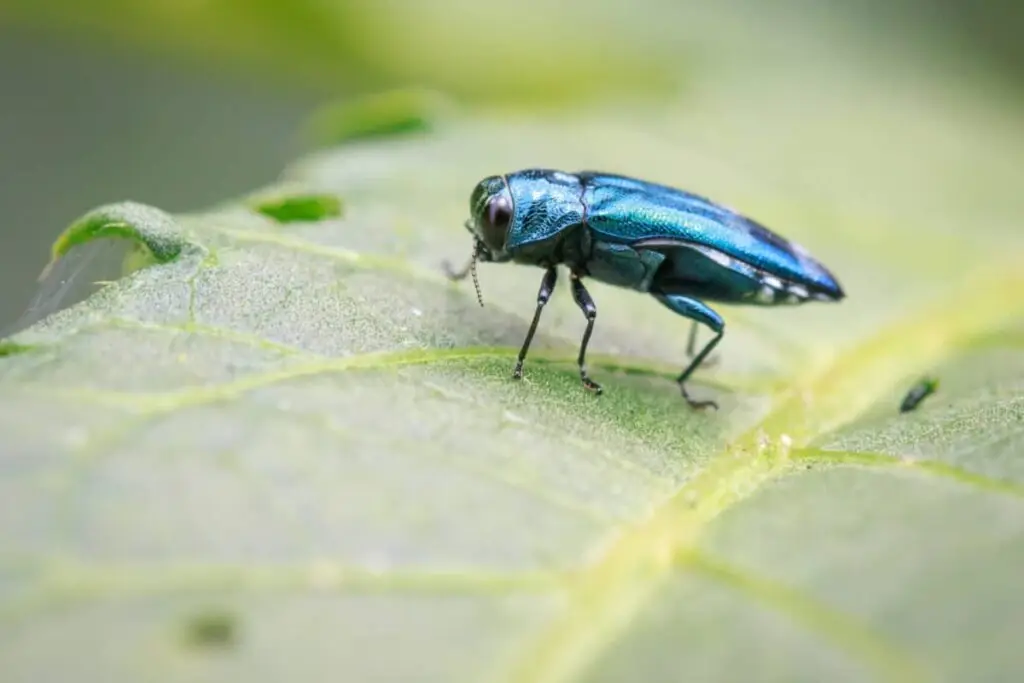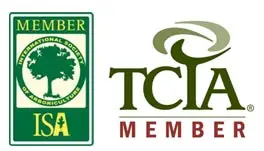Trees infected with emerald ash borer often display distinct signs and symptoms that can help identify an infestation. These signs may not be immediately apparent, as it can take several years for an emerald ash borer infestation to cause noticeable damage to a tree. However, as the infestation progresses, the following symptoms may become more evident.
Signs and symptoms of an Emerald Ash Borer infestation
- Crown dieback: One of the most noticeable signs of emerald ash borer infestation is thinning or dieback in the tree’s crown (top branches). Dieback occurs as the insects feed on the tree’s vascular tissue, disrupting the flow of water and nutrients to the uppermost branches. The crown may also appear thin and sparse, with fewer leaves than healthy trees.
- Bark splitting: As the emerald ash borer feeds on the tree’s bark, it can create small splits or cracks in the bark. These splits may be visible on the trunk or branches of the tree and may be accompanied by woodpecker activity, as woodpeckers often feed on the insects under the bark.
- D-shaped exit holes: emerald ash borer larvae create D-shaped exit holes when they emerge from the tree as adults. These holes, which are about the size of a penny, can be found on the bark of the tree and may be accompanied by small piles of sawdust-like frass (insect excrement) beneath the tree.
- S-shaped galleries: As the emerald ash borer larvae feed under the bark, they create winding, S-shaped galleries. These galleries can be seen when the bark is peeled back to reveal the tree’s cambium (the layer of actively growing tissue under the bark). The presence of these galleries is a strong indicator of emerald ash borer infestation.
- Yellowing or wilting leaves: As the emerald ash borer feeds on the tree’s vascular tissue, the tree may experience a reduced flow of water and nutrients, leading to yellowing or wilting of the leaves. This symptom may be more pronounced in the uppermost branches of the tree, as the insect tends to feed on these areas first.
If you suspect that a tree may be infected with emerald ash borer, it is important to have it examined by a certified arborist. Emerald ash borer infestations can be difficult to control, and early detection and treatment can help to slow the progression of the infestation and potentially save the tree. If the tree has been infected for too long, removal of the tree is often required to prevent a standing hazard tree from forming and potentially falling on people or property.
Read more about how emerald ash borer is is affecting trees in Canada.


